Description
Overcoming Non-Melanoma Skin Cancers
The Promise of Photodynamic Therapy and Other Innovative Therapies
Skin cancers other than melanoma are the most common type of cancer among white people. Indeed, non-melanoma skin cancers are so common and so curable that they are not even included in most national cancer statistics. The two main types are basal cell carcinoma and squamous cell carcinoma, and most of these occur on sun-exposed areas of the skin. In addition, there are precancerous areas of the skin called keratoses that may or may not progress to become cancer later on.
Overcoming Non-Melanoma Skin Cancer: The Promise of Photodynamic Therapy and Other Innovative Therapies highlights a new approach to the treatment of skin cancers, one rooted in the astounding cancer-fighting potential of Photomedicine (light-based medicine). Though the therapeutic applications of light date back many centuries, it is only within the past few decades that high-tech developments in laser technology as well as non-laser light have enabled the medical profession to realize the true healing potential of light.
Overcoming Non-Melanoma Skin Cancer is divided into four parts: (1) Understanding and Treating Non-Melanoma Skin Cancer; (2) The Photomedical Approach to Non-Melanoma Skin Cancer; (3) Promising Research Directions; and (4) Long-Term Control: Lifestyle Factors for Preventing Recurrences and Sustaining Remissions. Parts 2 and 3 will likely attract the greatest attention, as these parts present the various applications of Photomedicine while also explaining how such applications can either enhance conventional treatments or compensate for some of the limitations of those treatments.
Since the skin is our body’s largest organ, it should perhaps come as no surprise that skin cancer represents the largest group of all human malignancies. Thankfully, most skin cancers are not deadly, but they are enough of a problem to send many people to their dermatologists on a frequent basis. And the incidence of malignant melanoma, which is the deadliest of all skin cancers, has approximately tripled in recent decades.
Most of this ebook focuses on basal cell carcinoma (BCC), the most common form of non-melanoma skin cancer. The ebook presents information about innovative therapies for eliminating skin cancers of various types, as well as precancerous conditions that increase one’s risk of developing skin cancer. The main focus of this ebook is on photodynamic therapy (PDT) treatments, and on how these treatments are best implemented. In addition, we will examine some of the lifestyle factors that increase your risk of skin cancer (such as excessive exposure to sunlight), and what you can do to lower that risk. Substantial attention is also given to the prevention and treatment of actinic keratosis, or AK, an irritating skin condition that is also often referred to as solar keratosis. The term “keratosis” refers to small but obvious red, brown, or skin-colored patches that occur most commonly on the head, neck, forearms, or hands. Squamous cell carcinoma and Bowen’s disease (an early-stage squamous cancer of the skin) are also addressed, and various therapies for these conditions are described, including cryotherapy, surgery, radiotherapy, and others.
An excerpt from the ebook:
“PDT and laserthermia have emerged as highly successful, targeted strategies for treating skin cancers and precancerous skin conditions. The treatment also achieves excellent cosmetic results as well. Indeed, in many instances, the recipients of such treatment end up looking better than they did before the diagnosis.
“In 2010, a comprehensive review of the scientific research concluded that PDT is a well-accepted option for the treatment of many skin cancers, both benign and malignant.[1] In this section, we will address some of the key research supporting this assertion, and explain why we believe that PDT and laserthermia are indeed the answer to skin cancer.
“While it’s true that many skin cancers respond quite well to PDT, the therapeutic benefits go well beyond that superficial level, even seeking out and destroying abnormal cells that are lodged deep within organs and tissues throughout your body. Far from being a treatment that’s only ‘skin deep,’ the therapeutic potential of PDT may extend to the whole body, at least when performed under the right conditions.”
The ebook’s appendix includes a special discussion about two light-sensitizing substances, a dietary supplement called Bremachlorophyll, and a unique medicine called Bremachlorin. Because of its diverse effects against cancer, Bremachlorin-PDT is likely to revolutionize the way Photomedicine is incorporated into modern cancer treatment. Bremachlorin-PDT has already demonstrated impressive benefits for patients with lung cancer, as shown in Part 2 of this ebook.
[1] Fayter D, Corbett M, Heirs M, Fox D, Eastwood A. A systematic review of photodynamic therapy in the treatment of pre-cancerous skin conditions, Barrett’s oesophagus and cancers of the biliary tract, brain, head and neck, lung, oesophagus and skin. Health Technol Assess. 2010 Jul;14(37):1-288.
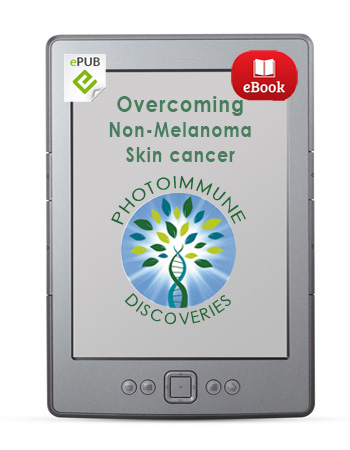
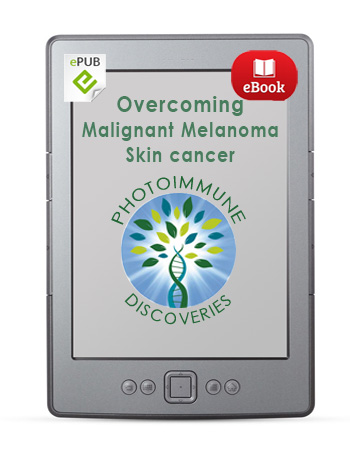
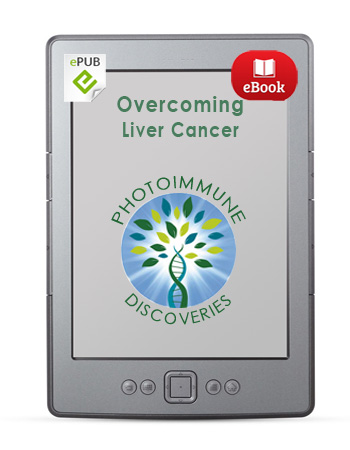
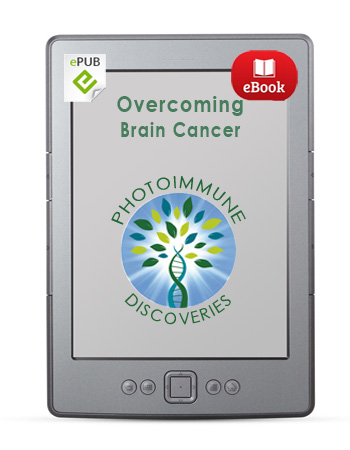
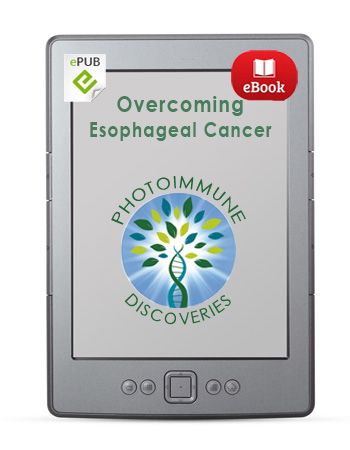

 English
English Français
Français Deutsch
Deutsch Nederlands
Nederlands